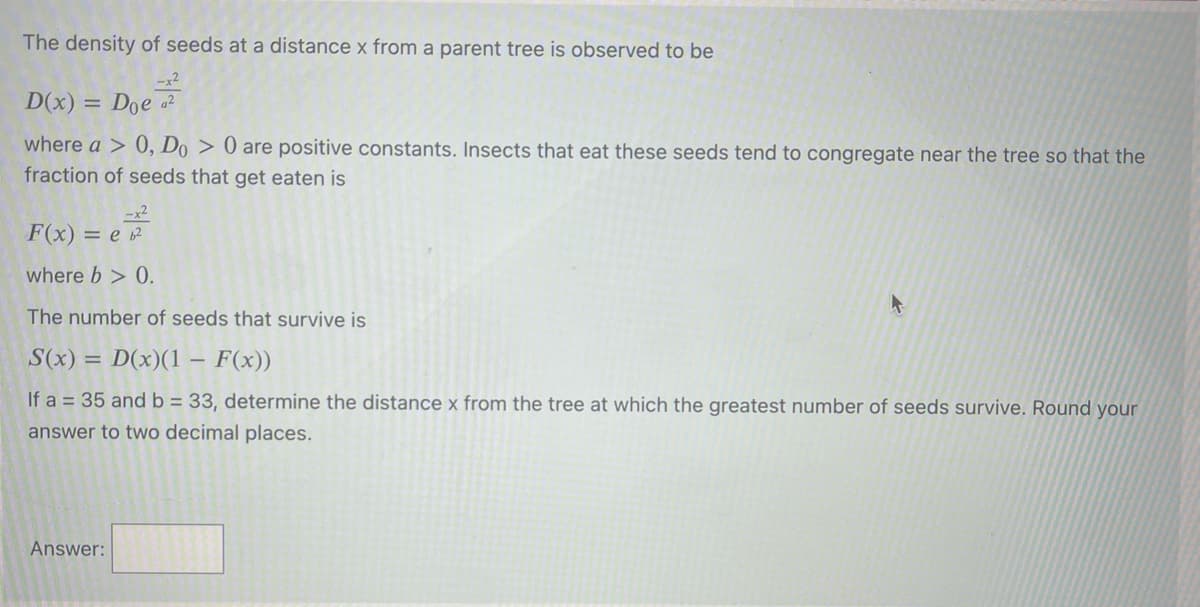The density of seeds at a distance x from a parent tree is observed to be -x2 = Doe a2 %3D where a > 0, Do > 0 are positive constants. Insects that eat these seeds tend to congre raction of seeds that get eaten is
The density of seeds at a distance x from a parent tree is observed to be -x2 = Doe a2 %3D where a > 0, Do > 0 are positive constants. Insects that eat these seeds tend to congre raction of seeds that get eaten is
Functions and Change: A Modeling Approach to College Algebra (MindTap Course List)
6th Edition
ISBN:9781337111348
Author:Bruce Crauder, Benny Evans, Alan Noell
Publisher:Bruce Crauder, Benny Evans, Alan Noell
ChapterA: Appendix
SectionA.2: Geometric Constructions
Problem 10P: A soda can has a volume of 25 cubic inches. Let x denote its radius and h its height, both in...
Related questions
Question
100%

Transcribed Image Text:The density of seeds at a distance x from a parent tree is observed to be
-x2
D(x) = Doe a
where a > 0, Do > 0 are positive constants. Insects that eat these seeds tend to congregate near the tree so that the
fraction of seeds that get eaten is
-x2
F(x) = e
where b > 0.
The number of seeds that survive is
S(x) = D(x)(1
- F(x))
If a = 35 and b = 33, determine the distance x from the tree at which the greatest number of seeds survive. Round your
answer to two decimal places.
Answer:
Expert Solution
This question has been solved!
Explore an expertly crafted, step-by-step solution for a thorough understanding of key concepts.
Step by step
Solved in 4 steps

Recommended textbooks for you

Functions and Change: A Modeling Approach to Coll…
Algebra
ISBN:
9781337111348
Author:
Bruce Crauder, Benny Evans, Alan Noell
Publisher:
Cengage Learning

Functions and Change: A Modeling Approach to Coll…
Algebra
ISBN:
9781337111348
Author:
Bruce Crauder, Benny Evans, Alan Noell
Publisher:
Cengage Learning